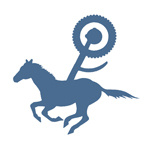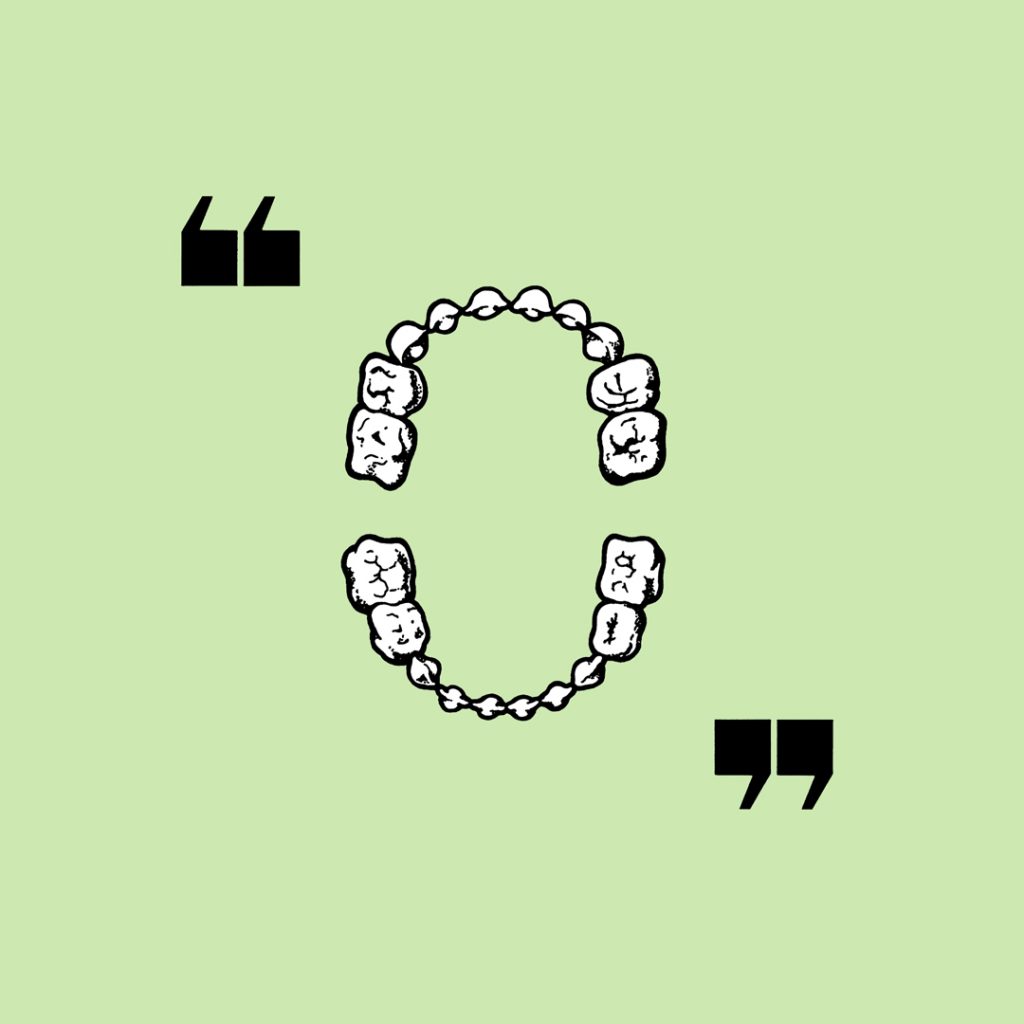

WELCOME TO OUR NEW NORMAL
What a year 2020 has been! A global pandemic is upon us — devastating; fascinating; and, of course, ongoing. Who could have predicted we’d be here, now, facing a collective challenge that has already radically shifted the way we work and play, think and breathe … a lifetime of change, compressed upon us in a mere moment.
Still, within all this chaos, life goes on — and, like so many other cultural entities, we’ve managed to react carefully, find new ways of working, stay the course. Despite it all, we’ve pushed forward with our major goals for the year, ticking nearly every box … and here we finally are!
For CAROUSEL, 2020 was always going to be a radical year, and with the completion of this issue, we are excited to actualize one of the most significant changes to the journal that has ever occurred: after almost 40 years as a print entity, CAROUSEL has shed its paper body, shifting its publishing into the space that we all spend so much time in now — a space that, for better or worse, is where all the radical action is at.
This has been a long time coming; it’s not actually a response to our social moment, though it’s predictive and timely nevertheless. We’ll be honest in letting you know that the decision to revisit our mandate and revise our future path was made well before the current pandemic struck. In fact, C43 (our spring issue/our final print issue), with its editorial focused on framing this change, went to print just before self-isolation began for us all back in March. If anything, living through the COVID-19 pandemic has made it even more clear that CAROUSEL must be dynamic & flexible if we are to thrive, and that the online sphere is more than ever a key place for us to be connecting with our audience & community.
WHY PUBLISH EXCLUSIVELY ONLINE?
The short answer: to make CAROUSEL even better than it was before!
Look, I personally love print. As both editor & designer, I have always prided myself on CAROUSEL’s bold physicality, a truly lush platform for presenting new work. I’m proud of every single issue I’ve managed to shepherd into existence: as of C43, I have personally edited, designed and distributed almost 30 consecutive issues of this fine publication. Whew! I take great comfort in this minor achievement …
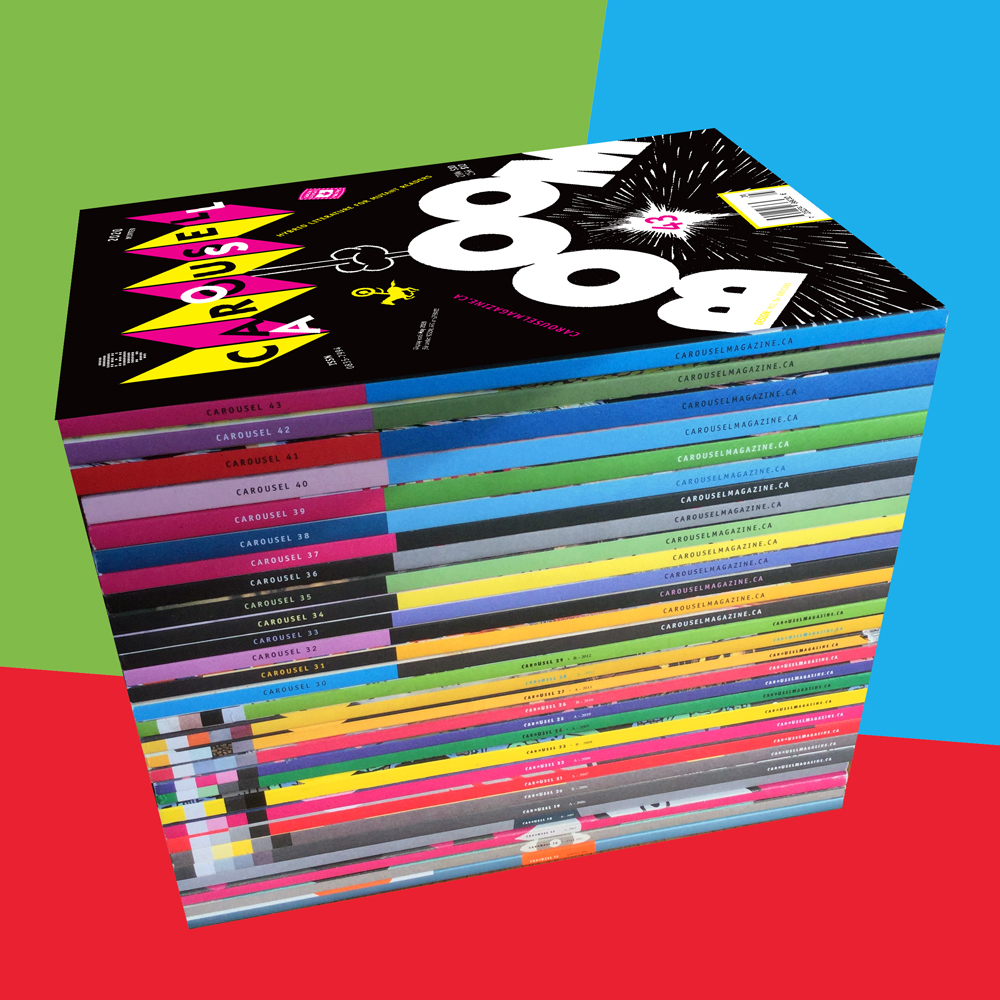
… Still, as a journal with a lot of history behind us, we are aware that the way people read and interact with literary journals has changed. We have been turning over and inspecting the realities of our audience for some time now, and have resisted making this move for a few years longer than we probably should have. As we noted more fully in C43’s editorial text, we feel that this move online is ultimately in the best interests of the works of art and literature that we feature. It’s that simple. The world has shifted its focus online, and it’s necessary for us to shift our platform there too in order to thrive.
In addition to being easier to share and promote the works & the creators we publish (no more excerpts or partial texts), online journals are not as aggressively bombarded with the numerous economic concerns (like constantly rising printing, postage and distribution costs) that often distract from the joy of publishing a print journal. Ultimately, we think we would be doing an injustice to the larger project that is CAROUSEL to keep going as we have.
WHAT’S NEW AND WHAT’S CHANGED?
Translating the spirit of an adeptly designed print magazine into the more loosely defined environment of internet space has been an admittedly frustrating trip — we’re artists, not programmers, so a lot of guesswork had to be applied to developing a sense of control over what is seen on your screen. The alchemy of accurate typesetting for the browser page was something that we had to work out through trial & error, especially with the handful of poems that play games with white space and experiment with form. On the printed page, that’s all easy to lock in place with a good layout program, but on the screen, it’s a much more blurry exercise. For every new, previously unexplored edge of the issue we confronted (layout, visuals, navigation, contributor’s notes) there were challenges. It’s taken a number of months of hard work and testing/viewing on a number of platforms (in our ideal version of things, you’re reading this right now on a tablet in landscape view, but it should work decently on both laptops and desktops as well) to get our transition into screen space to look and feel right. In the end, we’re happy with how these formal challenges have been resolved, and, importantly, so are our authors and artists.
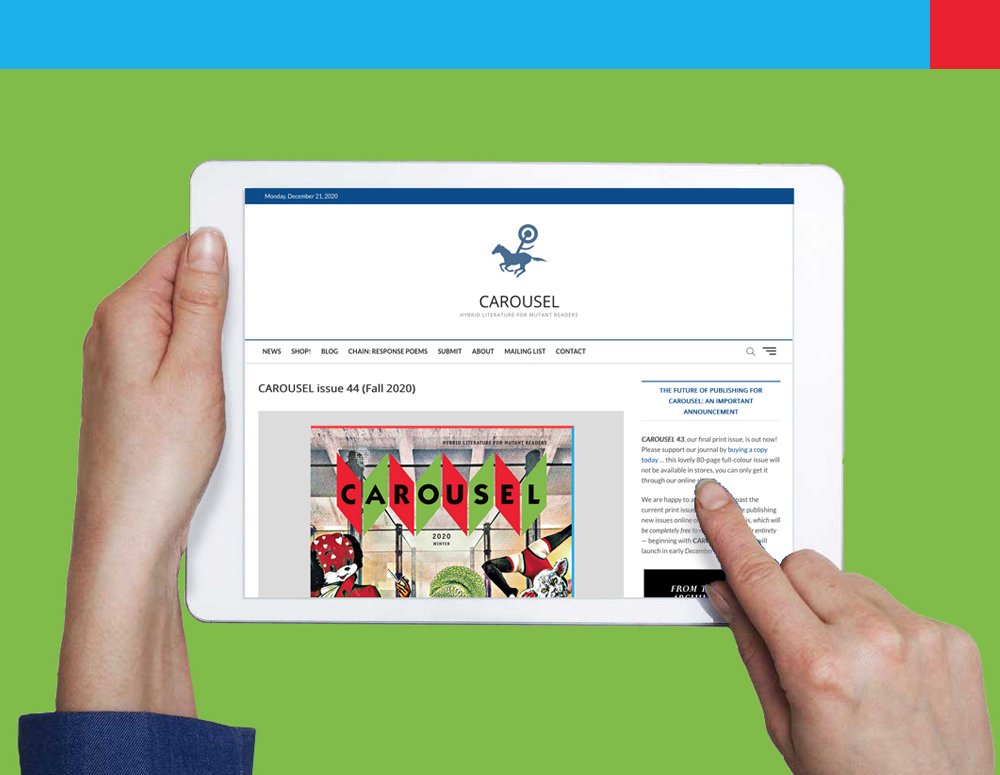
And now, it’s in your hands! It is our hope that this latest issue of CAROUSEL still functions for you, our readership, as a discrete issue — so we’ve kept many of the key features you’ve come to expect in place, starting with the creation of a cover for the issue: this one’s done by the fabulous Chet Bell, whose work we discovered only recently but were able to include in the issue on short notice! That’s certainly a perk of online publishing, the ability to come across something and quickly respond to its merits (for more on Bell’s practice, visit the feature portfolio).
Breaking into the issue’s content: we’ve got all the usual poetry and fiction in many exotic varieties, a multi-page formalist comic, as well as a couple of creative conversations for you to enjoy.
Anyone familiar with our print journal will note that we’ve downplayed the amount of artwork included in this issue, though that may expand again in the future. For now, it seemed less important to weave artwork throughout the pages of the book, because, frankly, there is no book. And in that sense, the narrative and intellectual disruption that pageworks provided to the flow of the physical magazine seems a lot less necessary to the overall read of an issue now. As always, we want to continue to publish artwork that resonates with a clear voice and challenges our readership — but we still need to figure out strategies that offer artists a place to call their own within our framework. What we don’t want to do is simply litter artworks throughout the issue in a purely decorative manner, as many online journals seem wont to do. So for now, we go minimal.
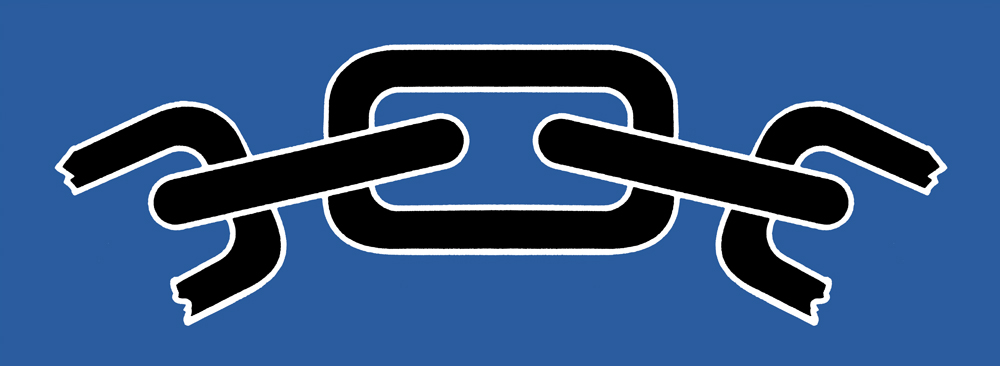
Two completely new sections include (i) CHAIN, which we started back in August as an ongoing experiment with, and exploration of, the idea of response poetry. It started with one poem — the first link in the chain — by Canadian writer and publisher Andy Verboom. Then we opened up a call for poems responding to Andy’s work, and chose the one with the most potential: we were looking for a work that had strong connections to the one that came before it but that was also different enough to stand on its own and lead somewhere new. That process is continuing, the chain building link by link indefinitely, with each new poem in the series chosen from an array of excellent monthly submissions responding to the current poem in the chain. The winning poems appear one at a time on our website, more or less monthly, before becoming formally collected in our bi-annual issues — in this issue, you’ll be able to read the first four in sequence and contemplate/analyze their connective tissue. If we have our way, CHAIN will become the world’s longest continuous series of response poems! Only time will tell ……………………

And (ii) USEREVIEW: for the first time in our 37-year history, we’ve committed ourselves to regularly publishing reviews. Never satisfied to simply jump on even the most successful of bandwagons, we’ve developed our own singular approach … USEREVIEW is a review column, published monthly on our blog, that includes at least one traditional literary review and one or more experimental reviews. Like CHAIN, these are collected bi-annually in our pages — in this issue, you’ll be able to read and enjoy all 12 reviews-to-date. Be sure to also read all about our approach to reviews, including our efforts to stake out the ground of experimental reviewing, in Jade Wallace’s debut USEREVIEW editorial.
Both of these new projects are things we’ve initiated specifically to take advantage of the online space. They are designed to bridge the gap between formal issues, which will still only appear twice a year. Our approach with both these efforts is to offer our readership several ways into the works: if you’re an active reader of our site and blog, you’ll likely run into the individual posts as they go up from week to week, month to month. If, however, you’re the kind of reader that only wants to check in when a major release happens, their inclusion within the pages of each collection allows you to take it all in in one go!
SO, HOW DID WE DO?
That’s it — CAROUSEL 44, off to the races. On our end, things feel good! Admittedly, there is still some internal nostalgia floating in the air right now associated with not being able to hold a physical copy in our hands or smell the ink of a just-delivered, perfectly printed publication — but we are also extremely excited about the prospect of witnessing our readership expand exponentially as we coast into 2021!
We are proud of the fact that our paywalls have been dropped, so to speak; from here out, no one will need to subscribe/pay for access to our content any longer, which is sure to greatly expand our issue’s online potential. So, if you, the reader, decide that you love a piece from an issue, or our archive, please take a moment to share it with others on social media!
Warmly,
Mark Laliberte
Editor
P.S. We’re leaving our ‘Discussion’ section open on this singular page of the journal, so please be sure to post your tasteful comments about the issue here … we’d love to know what you think of the works it contains!

Mark Laliberte is a Canadian artist, writer, editor and graphic designer — and the publisher of Popnoir Editions (est. 2016) which publishes art books, comics, zines and other creative ephemera. Recent personal books include: BRICKBRICKBRICK (BookThug), Grey Supreme 01 (Koyama Press), asemanticasymmetry (Anstruther Press), BookBook (above/ground) and Explosive Comic (Swimmers Group). Laliberte is also a member of the collaborative writing entity, MA|DE, and their latest chapbook is A Trip to the ZZOO (Collusion Books). More info: marklaliberte.com + ma-de.ca

